Introduction – The Meditating Entrepreneurs

Be a beta reader: Email me.
I’m an optimist. I believe in truth, the goodness of humanity, and positive endings. Despite the human suffering on the planet, I believe anything is possible, and that we can live in a world of peace and love.
I’m writing this book to share what I discovered, but not in theoretical terms. I am going to tell stories about a remarkable entrepreneurial community of seekers and idealists who started from nothing in rural Iowa created extraordinary businesses. These stories need to be told, not just as history but to teach and inspire.
I want you to see from each entrepreneur’s journey that anything is possible.
I want you to understand that you can create abundance and not give up your core values.
I want you to know that truth-seeking, self-awareness, and social good are synergistic, not antithetical, to creating material success, and that self-development and making money go hand in hand.
I wrote this book for people who are committed to their personal evolution and view successful entrepreneurship as part of that self-development process.
I wish I could have read this book when I began my company.
Move to Iowa, get rich, create world peace!
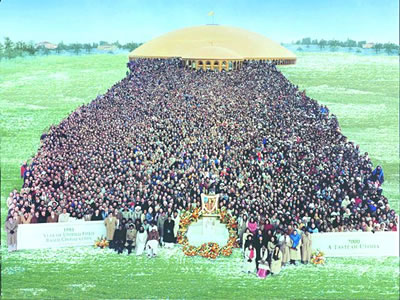 “Meditate together at M.I.U. and create world peace. You will be rewarded 10,000 times over spiritually and materially.”
“Meditate together at M.I.U. and create world peace. You will be rewarded 10,000 times over spiritually and materially.”
— Maharishi Mahesh Yogi, Founder of the Transcendental Meditation (TM) program, at Amherst MA in 1979 asking those practicing advanced TM techniques to move to Maharishi International University in Fairfield, Iowa.
Thousands of meditators like me heard the request. Thanks to the simple, natural, effortless daily practice of TM, we were experiencing greater clarity, better health, and more happiness. Those experiences made Maharishi’s bold promise have at least some plausibility. However, most of us were in our 20’s and 30’s, many starting families. How would we support ourselves in rural Iowa? We didn’t farm, and there were only so many volunteer, room and board positions at Maharishi International University (M.I.U).
At the time, I had an excellent position as a software engineer at Hewlett Packard in California’s sunny and mild Silicon Valley. A short drive took me to the ocean, San Francisco, or Yosemite. Now Maharishi asked us to relocate to a land of corn growing and pig farming, hot summers and cold winters, and five hours from major Midwestern cities.
Thousands move to Fairfield
 Over the subsequent years, many of us ignored common sense and our parents’ pleading. We followed our hearts and moved to Fairfield.
Over the subsequent years, many of us ignored common sense and our parents’ pleading. We followed our hearts and moved to Fairfield.
In Fairfield, we started hundreds of small businesses. We did so even though many of us a decade before were anti-establishment hippies who knew nothing about business. Many businesses failed. Others succeeded but stayed small. Still, others ended up being sold for hundreds of millions of dollars.
We pioneered inexpensive long-distance phone service, infomercials, and testing for genetically engineered food. My publishing business in 1985 started writing about small computers, which became today’s smart phones.
Other entrepreneurs restored stained glass, took marathon running finish line photos, brokered oil and gas, designed book covers, taught yoga teachers, supplied products to chimney sweeps, created People Magazine’s best ice cream of the year, sold incense, made a top birdwatching website, developed no-money down real estate courses, ran an organic dairy farm, started a home health service, built an assisted living center, produced non-dairy avocado ice cream, introduced panties of the month, invented waterjet cutting for marble artwork, manufactured essential oil diffusers, provided back-end services for financial planners, sold a book marketing company for $380 million, opened local used bookstore and cafe, invented sky ceilings, pioneered solar energy in Iowa, and so much more.
The short version of my story
Rita, my wife to be, and I shared a deep desire for personal development and spiritual growth. Consequently, our honeymoon in 1984 consisted of the drive from Palo Alto, California to Fairfield, Iowa. Both of us gave up good jobs. We had about $10,000 of savings to cushion us on our new adventure. Shortly before leaving Hewlett Packard (HP), I used the employee purchase program to buy two cutting-edge products – the first LaserJet printer and the first PC-compatible laptop.
Once in Fairfield, I decided to write software that would allow the two devices to communicate. I soon realized that I would not make my fortune with proceeds from “PrinterTalk.” To support Rita and me, I began selling personal computers for a local retailer. My wife knew I wasn’t happy. Her regular prayer augmented by twice a day meditation was that I start my own business. One day, as Rita recalls, I burst out of my office — I would create a newsletter to support HP laptop users, and through the newsletter, I would sell PrinterTalk.
Over the next 27 years, we produced 179 issues of magazines about HP Portables and Palmtops, Microsoft handhelds, and the Apple iPhone. In 2011 at age 64, I turned the business over to three 20-something meditating employees. The four of us shared ownership. My only responsibility was to give counsel.
Teaching undergrad “The Successful Entrepreneur”
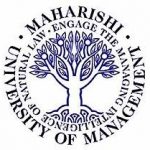 Although I had an excellent education, I had no business or publishing background. My story was like many fellow Fairfield immigrants who came for enlightenment and world peace. To stay in Fairfield, we began businesses and despite our lack of know-how, often succeeded.
Although I had an excellent education, I had no business or publishing background. My story was like many fellow Fairfield immigrants who came for enlightenment and world peace. To stay in Fairfield, we began businesses and despite our lack of know-how, often succeeded.
I’ve always loved to teach. I thought that sharing the successes and challenges of those of us who started businesses in the 1980’s and 1990’s could influence the lives of young undergraduates. I wrote the following to my first students at Maharishi University of Management (formerly Maharishi International University).
Feb 24, 2012 – Dear Student,
This course will likely change your life. A similar course I took 30 years ago, taught by Silicon Valley entrepreneurs changed mine.
In this class, you will be exposed to extraordinary stories from Fairfield entrepreneurs. Seeds will be planted that you will use for the rest of your life whether or not you end up starting a business.
During these weeks, wonderful, successful people give their time freely. They do so to share what they’ve learned about starting and running a business. Many will speak of the role that the Transcendental Meditation program played in their success.
I promise, if you are proactive, assimilating the ideas that resonate, the class will stay with you.
I’ve now taught the course for seven years, with over 75 speakers. Students tell me the class has changed their life. I am writing this book to plant the seeds for you to live 200% of life – 100% inner fulfillment, 100% outer abundance.
What we had in common
The guest speakers and I surprised the students in how different we were. Some of us were introverts, others, extroverts. Some were cautious, and some threw caution to the wind. Despite these differences, we all seemed to share the common characteristics of enthusiasm, persistence, generosity, service, vision, keeping promises, clear thinking, and the ability to adapt to and take advantage of change.
We also shared the daily experience of T.M., the home, as Maharishi described it, of an unbounded reservoir of energy, intelligence, and happiness, “The field of all possibilities.”
Maharishi would tell us that anything was possible, and he led by example. A monk with no possessions, Maharishi traveled around the world many times. He and his teachers taught millions of people how to meditate. Maharishi reframed the public perception of meditation from a difficult, mystical, unworldly practice to a simple, effortless technique for better health, more happiness, and increased productivity. The ultimate entrepreneur, Maharishi created a world-wide organization that sold a technique for how to do nothing to the busy, worldly West.
Maharishi never asked anyone to believe anything. He encouraged a full range of physiological, psychological, and sociological scientific studies on the effectiveness of T.M. He invited academics to add the experience and understanding of Pure Consciousness, the source of all thought, to complete their disciplines.
In the 1970’s, the TM organization mostly consisted of college students and recent grads. Maharishi would ask us, his teachers of meditation, to do the most formidable of tasks despite our youth and inexperience. We organized conferences and spoke to large audiences. We contacted the U.S. president, governors, congressmen, CEO’s and other leaders to tell them about meditation at a time when meditation was considered strange.
Maharishi told us that we could accomplish anything that we put our attention on. We already were benefiting from the experience and understanding of meditation. With Maharishi’s tutelage, example, and encouragement, we started businesses in isolated, pre-internet rural Iowa with little know-how or capital.
What this book is not
While I consider this book most practical, the book does not pretend to teach marketing, accounting, or operations skills. This book teaches the fundamentals of entrepreneurial success through example.
Although the experience, understanding, and purpose of Transcendental Meditation play a central role in this book, the book is not about TM or how to practice it. It is about what it takes on the inside to start and run a successful business.
Meditation has become mainstream
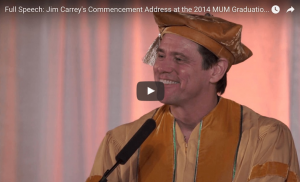 Maharishi began teaching Transcendental Meditation in 1959. Since then, many millions throughout the world have learned. Today, meditation is no longer considered strange. Doctors, psychologists, businesspeople, athletes, and pop-culture icons recommend it.
Maharishi began teaching Transcendental Meditation in 1959. Since then, many millions throughout the world have learned. Today, meditation is no longer considered strange. Doctors, psychologists, businesspeople, athletes, and pop-culture icons recommend it.
Even with all of meditation’s popularity, confusion remains. People think all meditation is the same. They believe that their mind is too active to meditate, and that they don’t have the time or discipline for a daily practice.
The Transcendental Meditation technique is unique among the various types of meditation. It is not concentration and does not involve focusing the mind. It is not contemplation and is not about thinking deep thoughts. Rather, TM is a simple, natural, effortless process. A qualified teacher provides personal instruction over four consecutive days.
Hundreds of scientific studies have verified that TM meditators enjoy less stress, better health, more clarity, and greater happiness. Brain wave studies show unique synchronous patterns during and after TM that correlate with an individual’s subjective experience.
The Beatles learned TM from Maharishi in the late 1960’s, which generated a lot of publicity. To this day Paul McCartney and Ringo Starr perform at benefit concerts which raise money for inner city children to meditate through the David Lynch Foundation.
Director David Lynch’s foundation sponsors Transcendental Meditation-based programs for under-served youth, veterans, at-risk women’s groups, American Indians, homeless shelters, and prisons. Other popular meditating entertainers who appear at David Lynch Foundation events include Jerry Seinfeld, Katy Perry, Tom Hanks, Katie Couric, and Hugh Jackman.
Comedian Jim Carrey, former Japanese prime minister Dr. Yukio Hatoyama, and Congressman Tim Ryan meditate and have given Maharishi University of Management commencement speeches. Other well-known meditators include hedge fund billionaire Ray Dalio, Tim Ferris, George Lucas, Clint Eastwood, Russell Brand, George Stephanopolis, Sheryl Crow, Arianna Huffington, Michael J. Fox, Stevie Wonder, Joe Namath, Mike Love, Dr. Oz, Ellen Degeneres and the late Kurt Vonnegut, Arthur Ashe, and Buckminster Fuller.
After learning to meditate, Oprah Winfrey had all her staff learn. She visited Fairfield for a TV special and called Fairfield, “American’s most unusual town.”
All the profits from this book will be donated to the David Lynch Foundation, Maharishi University of Management, and other TM-related organizations.
To find a local qualified instructor, visit www.tm.org.
How I wrote and organized this book
I tell each Fairfield meditating entrepreneur invited to my class, “You have about an hour to share with students the most important lessons you learned on your entrepreneurial journey.” Every year, about a dozen entrepreneurs speak. Each talk seems to build upon the previous one, each one inspiring, compelling, and wise.
All who hear the speakers feel the stories and practical wisdom deserve a wider audience. That’s why I decided to write this book. I video each talk and Q&A session. Each story in the book is based on the transcription. To be true to each entrepreneur’s voice, enthusiasm, and way of thinking, I chose to write the book in the first person as if I were the entrepreneur. I found it thrilling and absorbing to “get inside” each of the speaker’s adventures, retelling the story from the entrepreneur’s point of view.
The informal setting of the class included a lot of give and take with the students. Speakers jumped from one part of their story to another with lots of wisdom interspersed. I attempted to translate the informal and sometimes meandering spoken word into a tighter, more linear, written expression without losing the essence of the entrepreneur’s voice or message.
An organization emerged after working on two or three stories. Each chapter begins with a brief third-person introduction. Three sections follow, each more universal in scope than the previous.
Journey – the story of how the entrepreneur began and evolved the business
Wisdom – lessons learned along the way
Spirit – the essence of the entrepreneur’s success and wisdom
I ended each chapter ends with Twelve Tweets — short summaries of the key ideas from the chapter.
When done, I sent a draft to the entrepreneur and incorporated feedback before a final edit. A big thank you to the featured entrepreneurs for sharing their wonderful inspiring stories and allowing me to hijack their voice. Apologies ahead of time to entrepreneurs and readers for any inaccuracies, mistakes, or lack of clarity.
Each story differs and stands alone. When all the stories are read together, common themes emerge, knowledge increases, and inspiration grows.
While the stories of these entrepreneurs and their enterprises continue, the book stays frozen in time in early-2019.
Featured entrepreneurs
Fifteen of over 200 possible stories about Fairfield entrepreneurs appear in Volume 1 of The Meditating Entrepreneurs. My selection criteria was arbitrary and based on who had spoken to my class twice, the quality of the transcript, and my inclination when it was time to choose the next story. It’s not possible to rank the 200 stories. In my classes, different talks resonated with different students.
DREAMERS
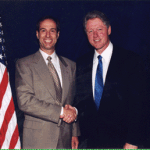

I begin with Fred Gratzon and Janet Attwood, having categorized them as “Dreamers.” (I also considered “Visionaries” and “Inspirers.”) On the surface, they have little in common. The consummate entrepreneur, Fred served his Great Midwestern ice cream at a White House lawn picnic to Ronald and Nancy Reagan and to Congress members. Later Fred founded a telecommunications company that went public.
Janet runs an organization that has helped hundreds of thousands of people find their life purpose.
I call Fred and Janet, dreamers, because of their expansive views of what is possible, and because of the lightness and joy they bring to their work. They both achieved success by inspiring others through their vision and sense of play.
SERVING THE COMMUNITY
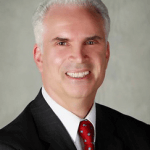
 The second section, “Serving the community,” looks at Fairfield. In the Entrepreneurial Mayor chapter, Ed Malloy describes how he helped unify a traditional agricultural community with its new non-traditional meditating citizenry by having both sides plan the town’s future together. His efforts helped transform a quiet, rural, Iowa town of 10,000 into an entrepreneurial, artistic, multi-cultural, sustainable, entertainment Mecca.
The second section, “Serving the community,” looks at Fairfield. In the Entrepreneurial Mayor chapter, Ed Malloy describes how he helped unify a traditional agricultural community with its new non-traditional meditating citizenry by having both sides plan the town’s future together. His efforts helped transform a quiet, rural, Iowa town of 10,000 into an entrepreneurial, artistic, multi-cultural, sustainable, entertainment Mecca.
Betsy Howland arrived in Fairfield at a time when there was no place other than the university campus for meditators to congregate. Betsy describes how she and her three daughters used the power of intention to create a community gathering spot that features homemade meals and used books.
ARTISTS
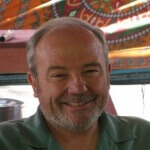
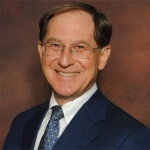 Many “Artists” moved to Fairfield. George Foster, Ron Bovard, and Jim Davis applied their art to create some of Fairfield’s most successful businesses. George shares how he transformed himself from starving artist to a leading independent book cover designer through service, single-mindedness, and simplicity.
Many “Artists” moved to Fairfield. George Foster, Ron Bovard, and Jim Davis applied their art to create some of Fairfield’s most successful businesses. George shares how he transformed himself from starving artist to a leading independent book cover designer through service, single-mindedness, and simplicity.
Gallery artist, Ron Bovard became fascinated with stained glass and with the Renaissance model of a community of artists. Combining those interests, Ron founded Bovard Studios to design, repair, and install stained glass throughout the U.S.
Jim Davis started taking pictures when young. His company uses photography to memorialize the personal triumph of marathon runners and of high school and college graduates. Jim found partners who moved the company forward while he continued with the photography he loved.
MAKING BUSINESSES WORK


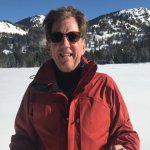 “Making businesses work” is about the behind-the-scenes infrastructure necessary for entrepreneurial success. Steven Winn, Monica Hadley, and Peter Huggins each have been able to take great ideas and operationalize them. Unlike many of their operations-oriented peers, they understood their importance to out-of-the-box, big-picture-thinking entrepreneurs. They leveraged their worth to form partnerships in various entrepreneurial ventures.
“Making businesses work” is about the behind-the-scenes infrastructure necessary for entrepreneurial success. Steven Winn, Monica Hadley, and Peter Huggins each have been able to take great ideas and operationalize them. Unlike many of their operations-oriented peers, they understood their importance to out-of-the-box, big-picture-thinking entrepreneurs. They leveraged their worth to form partnerships in various entrepreneurial ventures.
Steven Winn made, lost, and made again millions of dollars by partnering with marketing geniuses, grounding them with efficient, effective business fundamentals.
Monica has partnerships in four business and two non-profits. She is able to recognize entrepreneurial talent and great ideas and then provide the structure to make the businesses and non-profits work.
Peter got his start as a “fixer,” rescuing an operation weighed down by fraud and difficult people. Peter applied his secret sauce philosophy of “People come first” to bring success to everything that he undertook.
EDUCATORS
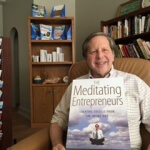
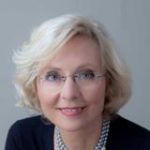
Eva Norlyk Smith and I fall into the “Educator” category. Eva uses the internet to provide training for Yoga Teachers. A writer, Eva discusses the value of developing a superpower skill.
Through my magazine publishing company, I helped HP, Microsoft, and Apple mobile computers users make full use of their devices. I discuss the power of integrity.
SAVING THE PLANET


Finally, visionaries Francis Thicke and Amy and Troy Van Beek are dedicated to “Saving the planet” through sustainable practices. Soil scientist Francis Thicke explains how he turned his organic dairy farm into a 736-acre experimental lab for others to learn from.
The Van Beeks operate the largest solar energy company in Iowa. Amy, a second generation Fairfield meditating entrepreneur, could also be categorized as an “Artist.” She brings her visual talents to marketing and building construction.
Troy, a former Navy Seal, leads through his inspirational vision of eliminating war through the creation of abundant, inexpensive, renewable energy.
I conclude with a final chapter and appendices that discuss the commonality among these successful entrepreneurs and the influence of Maharishi’s teaching.
For more information
and to beta read chapters, contact:
Hal Goldstein
hal@thaddeus.com
(Please comment below)

